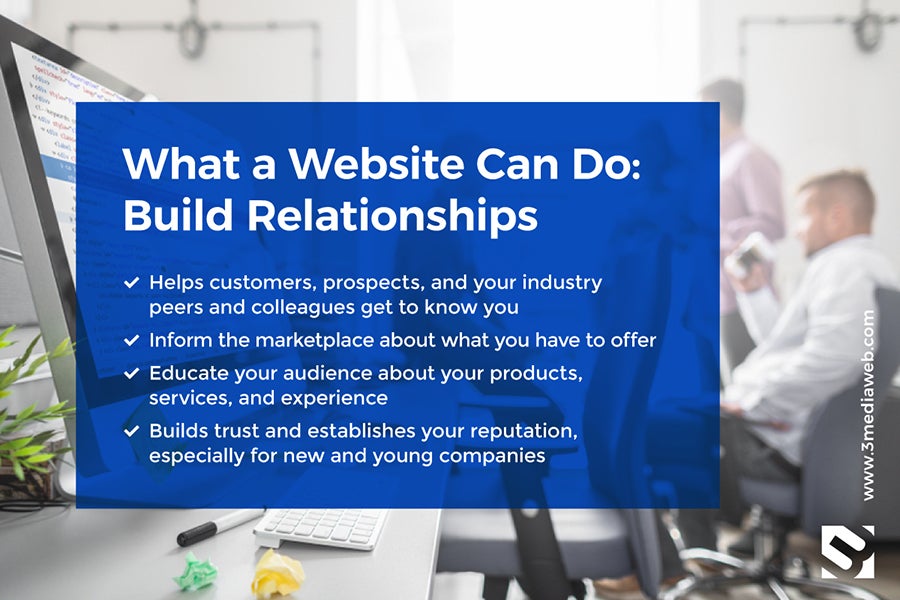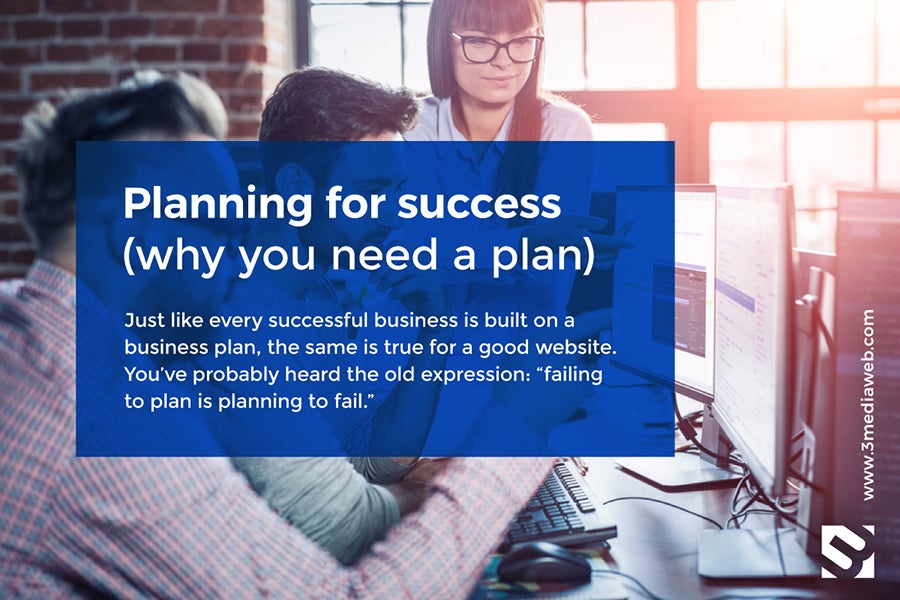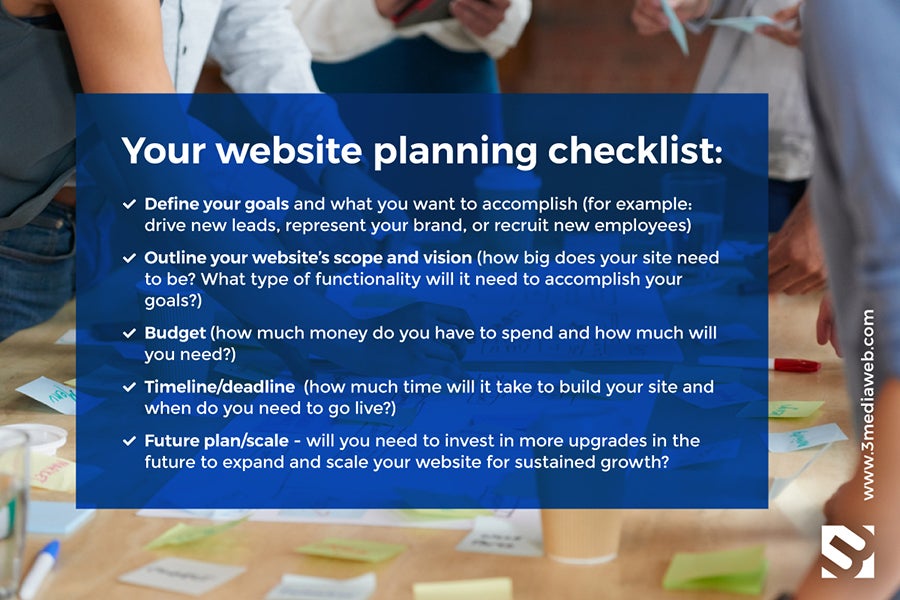Once upon a time, pre-internet businesses — and the customers trying to find their goods and services — mostly relied on print advertisements in newspapers and the prehistoric version of Google known as the Yellow Pages.
In today’s world, your website is your most important sales tool, whether you’re a local e-commerce business or an agency serving a global audience and customers. Whether your goal is to attract new customers, build your audience, or launch a new product or service, your website is like an old school Yellow Pages listing, virtual business card, and automated sales tool in one.
At any moment of the day throughout the world, people are online searching for what your business has to offer. Without a professional, highly functioning website, your business is missing out on potential sales and basically turning people away before they’ve even had the chance to find you.
Your website also helps to establish a relationship with prospective new customers before the first transaction, and helps to foster a sense of familiarity with your brand without any additional effort on your part. If someone feels like they already know you before they’ve met you, they’ll be a lot more likely to trust you with their business.
From the design, user experience, and content down to your hosting and web development platform, choosing the right partner to help you create the site you need and keep it running effectively requires a bit of due diligence to find the right match.
Whether your goal is to attract new customers, build your audience, or launch a new product or service, here are some of the main things to consider when planning a new website or upgrading your current site to make it as effective and profitable as possible:
What a website can do: building a relationship
Think of your website as a global sales rep and brand ambassador that never sleeps, never goes on vacation, and never takes a break. Beyond sharing basic information about your company and products and services, a website is a vital relationship building tool that delivers a number of additional benefits such as:
- Helps customers, prospects, and your industry peers and colleagues get to know you
- Inform the marketplace about what you have to offer
- Educate your audience about your products, services, and experience
- Builds trust and establishes your reputation, especially for new and young companies
Your website does the work so you won’t have to. When done well, a good website is a sales and marketing machine that works for you 24/7, across borders and different demographics.
Just as you wouldn’t let any random person speak for and represent your brand and company, your website needs to put your company’s best face forward, so it shouldn’t be taken lightly or approached as an afterthought.
As your most powerful and important marketing tool, your website should be one of your company’s biggest investments.
Identify the customer buying journey
Shopping online may seem like a random act, but most consumers follow a calculated approach and formula when it comes to deciding how to spend their money and buy the products and services they need. This is known as the buyer or customer journey, and understanding how your audience and customers think will help you decide how to design and structure your website:
Awareness stage: customer realizes they need a product or service, and decide the level of urgency (do they need it tomorrow, in a week, a month, later in the year?)
Consideration stage: they start doing research and Googling their options to find what they’re looking for
Decision stage: to buy or not to buy at all, to buy now or later, to buy from you or your competitors?
Your website is the only tool that can be present and offer your customers the information they need throughout the entire customer journey.
Planning for success (why you need a plan)
Just like every successful business is built on a business plan, the same is true for a good website. You’ve probably heard the old expression: “failing to plan is planning to fail.” When it comes to your website, failing can cost you a lot of precious time and money both in lost business and revenue opportunities, and in development costs if it turns out that you have to make major changes and upgrades to your site after the initial launch.
Your website planning checklist:
- Define your goals and what you want to accomplish (for example: drive new leads, represent your brand, or recruit new employees)
- Outline your website’s scope and vision (how big does your site need to be? What type of functionality will it need to accomplish your goals?) Start by making a list of the sites that you admire as well as dislike to help you define your own direction and vision. Research everything from color schemes to stock photos to get a sense of what might work for your brand and what you want to avoid.
- Budget (how much money do you have to spend and how much will you need?)
- Timeline/deadline (how much time will it take to build your site and when do you need to go live?)
- Future plan/scale – depending on your budget and short to medium term goals, will you need to invest in more upgrades in the future to expand and scale your website for sustained growth?
Elements of a successful website
The internet and website best practices are constantly evolving and changing. The downside of this phenomenon is that sometimes it can feel like a project is outdated or obsolete almost as soon as it’s launched. That said, getting the foundation right the first time will allow you to build a strong and powerful website that can sustain the cyclical and inevitable changes to search engine algorithms and social media trends and best practices.
Design
Your website’s design is one of the first things that will hook visitors and draw them in. A clean and well organized site will always win out over clutter and a million bells and whistles that can confuse and overwhelm your website’s visitors.
Here are some of the most important web design elements to keep in mind:
- Make it visually appealing
- Present professional branding
- Use professional or stock images
- Simple and intuitive layout and navigation
User friendly
Your website’s user experience is the other side of the design coin. It doesn’t matter how expensive, fancy, or informative your website may be: if the user experience is bad, you’ll lose your audience — and the sale — and probably for good.
The elements of a solid user experience include:
- Speed (pages should take three seconds or less to load)
- Relevant and catchy domain name
- Intuitive site navigation and organization
Content
You’ve probably heard the phrase “content is king” at some point. Having a static website that you update every few years is almost as bad as not having a website at all when it comes to search engine optimization. A regular publishing schedule of quality, informative, and relevant content is critical for SEO purposes and to establish yourself and your brand as a thought leader and authority in the marketplace.
Your content shouldn’t be overly salesy, but make sure to include calls to action throughout your site to help guide your prospects through every stage of the customer/user journey.
Effective back end
This is the blueprint and architecture for your website. Your customer won’t necessarily see behind the curtain, but the back end will ultimately determine how well your site runs and performs, so it’s one of the most important considerations when building a website. Depending on your needs, some of the most important elements of effective back end infrastructure include:
- Easy to update
- Security
- Levels of ownership and control
- CMS (content management system)
- Ability to upgrade as needed
- Define technology
- Email sign up
- Google analytics
- Plug-ins to perform various functions like customer surveys, shopping cart and e-commerce functions, and other special effects
- Accessible (can users with special needs access your site’s content and functionality?)
Responsive
It’s not enough for your website to look great and perform well on desktops and laptops. As more and more people do most of their browsing and shopping on mobile devices and tablets, your website needs to load and perform seamlessly across all platforms and devices, from page layout and design, to navigation and speed.
Accessibility
The need for accessibility on the web is another issue you must address when building a new website. Websites need to conform with ADA (American Disability Acts) compliance regulations and standards at some level. There are various levels of ADA compliance, and you must decide what pieces of accessibility are crucial (and even legal) for your business. With ADA compliance also comes costs, so you will need to factor that into your budget also.
Post launch planning
Rome wasn’t built in a day as they say, and neither is a successful website and online business. In addition to marketing and promoting your website, you should also have a plan in place to handle any bugs, glitches, and issues that will inevitably arise.
But planning can only take you so far. A decent website is still better than no website, so don’t let perfectionism hold you back. You can (and should) update and upgrade your website as your business grows and evolves.
Congratulations, you have a website plan, time for you to find the right agency to tackle it!





